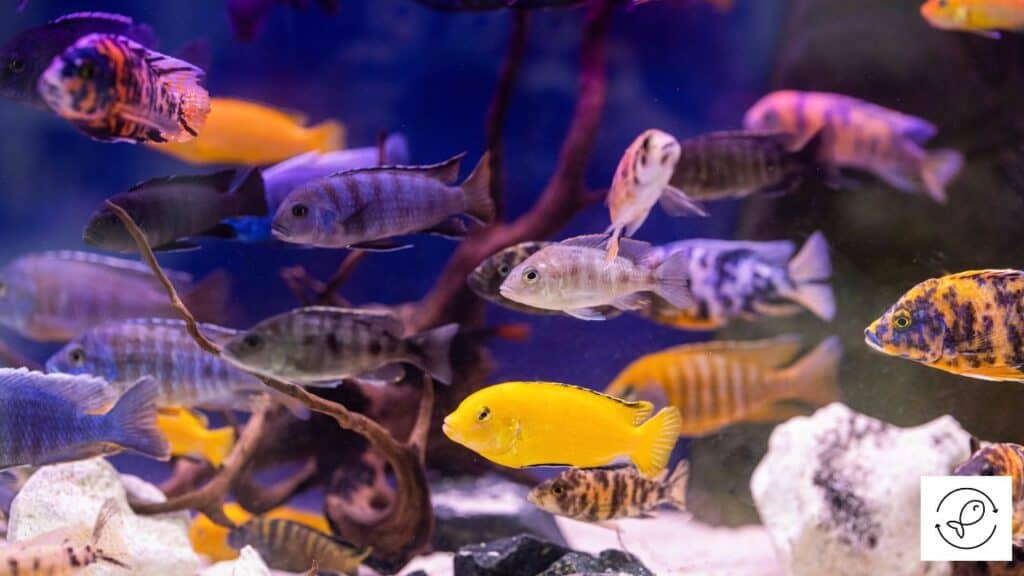In this guide, you’ll will learn about the various medications available for freshwater and saltwater aquarium fish.
All the information provided in this guide will help you in making informed decisions about treating various fish diseases. However, remember that playing doctor isn’t advisable always. When in doubt, consult a vet immediately.
With that said, let’s begin.
Freshwater Aquarium Fish Medications
So you’ve heard about all these medications you might need. It can get complicated because there are many options out there, and they can treat different diseases.
It’s up to you to decide which one to use. Every situation is different and some fish keepers might prefer one medication over another.
As you get more experienced, you’ll learn which medications work best for certain diseases and different types of fish. Until then, it’s a good idea to have a range of medications on hand so that you can treat your fish when they get sick.
Given below are some of the common freshwater aquarium fish medications, their purpose, and the advantages and disadvantages of each one.
Formalin
Formalin is a medication you can use for your freshwater aquarium fish if they get parasites.
The good thing about it is that it’s clear, so it won’t make the water in your tank change color.
However, the downsides are that it can be difficult to find and it’s quite pricey.
Malachite Green
Malachite Green is a medicine used for treating certain fish diseases such as velvet, fungus, and ick.
When used properly, it’s very effective. However, you need to be careful about the quantity you use because it can be harmful in large doses.
This medicine isn’t suitable for tanks with fry or certain types of fish like tetras.
Methylene Blue
Methylene Blue is mainly used to treat a variety of illnesses like velvet, fungus, and ick.
One of the good things about Methylene Blue is that it’s not too expensive and it works really well in treating these diseases. However, there is a downside.
This medicine can stain your aquarium’s gravel and decorations blue, and sometimes, this color change can be permanent.
Acriflavine
Acriflavine is mainly used to treat conditions like ich and fungus.
One of the good things about Acriflavine is that it works pretty fast.
However, a downside is that it might turn your aquarium water green.
Penicillin
Penicillin is mainly used to treat bacterial infections in fish.
The big benefit is that it’s very effective and acts quickly. However, there are some downsides too.
The main issues are that it’s difficult to find and it can be quite costly.
Tetracycline
Tetracycline is good for quickly handling bacterial infections.
One of the big advatages of this medication is that it doesn’t cost a lot. You can also find it easily, just head to any pet store. It’s also safe for your fish as it’s not toxic.
However, like all things, it does have a downside. When you use it, it can turn your aquarium water yellow. It could also make an unattractive foam appear on the water’s surface.
Saltwater Aquarium Fish Medications
If you’re just starting with saltwater aquarium fish, you should know that treating them isn’t always simple.
Home treatments like copper and antibiotics can help with diseases, but they don’t always work.
The truth is, copper and antibiotics are the main medicines we have for home treatment of marine fish diseases. However, they only work part of the time.
Copper
Some aquarists find copper useful in treating saltwater aquarium fish diseases. Its use, however, is controversial due to its toxicity in the marine environment.
Despite copper’s reputation for eliminating parasites, it can harm fish. Furthermore, copper doesn’t stay stable in saltwater systems, and its effects on the aquarium aren’t fully known.
Some experts suggest avoiding copper as a treatment altogether.
Still, copper-based medications remain a common choice in the aquarium trade. The advice is to use copper only if there are no other options.
If you do use copper, it’s recommended to treat the fish separately in a hospital tank. A copper test kit can help monitor the water levels.
There are two types of copper available in the market for treating aquarium fish: ionic and chelated copper.
Ionic copper is generally less stable and has a lower therapeutic level. Chelated copper, on the other hand, can be used on a wider variety of fish species.
It’s very important to note that copper is harmful to invertebrates. Therefore, never use copper in an aquarium that houses any type of invertebrate.
Antibiotics
Antibiotics are treatment compounds used for common diseases in saltwater aquarium fish.
They’re most effective when used in a separate hospital tank. This avoids potentially harmful effects on your established tank. However, these compounds don’t always fully cure diseases.
There are many different brands of fish medications. It’s important to check the label for the active ingredients before you use them.
Basically, you need to know what’s in the treatment you’re giving your fish.

